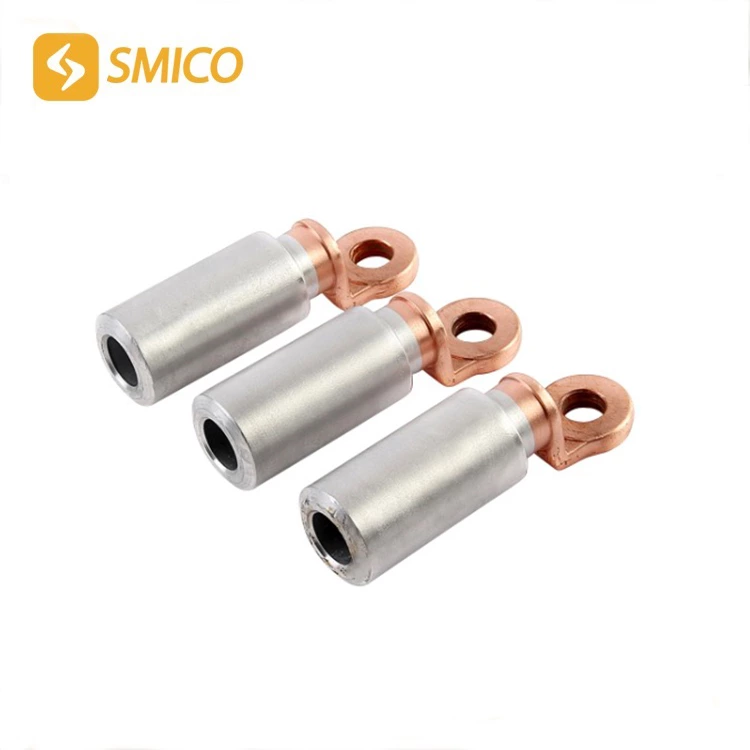Introduction And Analysis Of Common Problems Of Cold-pressed Terminal Blocks
Cable Lugs is now more and more widely used. As a connector-type accessory product, it has been applied to various electrical connection fields. This is mainly due to the fact that the increasing degree of industrial automation has driven the demand for the use of cold-pressed terminal blocks.
Of course, all electrical fields and industrial fields have strict and precise requirements for accessories, so when we use cold-pressed terminal blocks, we need to ensure the quality of the performance of this cold-pressed terminal block. The more important of cold-pressed terminal blocks are insulation performance and conductivity, which are determined by the insulating material and conductive components on the cold-pressed terminal blocks. Therefore, we should inspect and analyze these two major components before using the cold-pressed terminal blocks, so as to ensure the reliability of the quality of the cold-pressed terminal blocks.
Of course, even if these precautions are taken in advance, the cold-pressed terminal block is just a product, and some corresponding problems will still be encountered during use. Therefore, prevention and subsequent maintenance should be prepared to make the entire cold-pressed terminal block better. Below I will give you a specific analysis of several common problems of cold-pressed terminal blocks.
Common problems of cold-pressed terminal blocks
First problem: Poor contact, a common problem of cold-pressed terminal blocks during use
The most critical factor causing this problem is the metal conductor inside the cold-pressed terminal block, so when we choose cold-pressed terminal blocks, we should also choose some cold-pressed terminal blocks with better internal structure, finer materials and processing technology, so that the cold-pressed terminal blocks can maintain a stable and reliable state in terms of conductivity and contact force. Some cold-pressed terminal blocks with unreasonable designs, poor materials and rough processing technology may have poor contact during use. If a relatively high-quality cold-pressed terminal block has a poor release during subsequent use, it may be caused by the use environment or operation. For example, some use in harsh environments and improper operation of cold-pressed terminal blocks may cause poor contact inside the cold-pressed terminal block or inability to cooperate well with accessories.
Second problem: Poor insulation performance of cold-pressed terminal blocks
The main function of the internal insulating material of the cold-pressed terminal block is to form a mutual insulation between the contact and the shell through correct placement. Therefore, we should test the insulation of the cold-pressed terminal blocks in advance to ensure that the insulation parts of these cold-pressed terminal blocks have relatively good electrical properties, which has very strict requirements on the processing technology of the insulation materials. However, only in this way can the cold-pressed terminal blocks processed can prevent problems such as poor insulation performance. In the subsequent use process, it is also necessary to ensure that the cold-pressed terminal blocks are not contaminated with too much dust or seriously damaged during use. If there is dust, it should be cleaned in time, and the damage should be repaired in time, otherwise it will cause problems such as poor insulation performance of the cold-pressed terminal blocks, causing short circuits, leakage and other dangerous situations.
Advantages of the close arrangement of cold-pressed terminal blocks
The close and excellent arrangement of cold-pressed terminal blocks can not only be viewed from the overall appearance, but also provide a better foundation for later maintenance and replacement.
1. The terminals should be evenly distributed on the entire board surface with consistent density.
2. The cold-pressed terminal blocks should not fill the board surface. There should be a certain gap around the edge of the board. The size of the gap is determined by the size and fixing method of the printed circuit board.
3. Under normal conditions, all wiring terminal components must be placed on the same side of the printed circuit board. Only when the top-level components are too dense can components with limited height and small oscillators be placed. For example, patch resistance, patch capacity, patch IC, etc. are all placed on the floor.
4. The terminal layout cannot cross up and down. A certain interval must be maintained between two adjacent parts. If the interval is too small, they cannot touch.
5. Under the premise of ensuring electrical performance, the wiring terminal must place the components on the grid and arrange them parallel or vertically to each other to ensure neatness and beauty. Generally, the components cannot overlap. The parts should be arranged compactly, and the input and output parts should be as far away as possible.
6. The installation height of the cold-pressed terminal should be as low as possible. Generally, the body and lead of the component should not exceed Smm on the board surface. Too high will destroy the stability of bearing vibration and impact, and it is easy to fall or collide with adjacent components.
7. The high-current cold-pressed terminal of the printed circuit board determines the axial direction of the part according to the installation position and status on the entire machine. Regularly arranged parts should establish the axial direction of large-volume parts on the whole machine to improve the stability of fixing on the printed circuit board.
Considering the overall aesthetics of the terminal block, the success of the product depends on the intrinsic quality of the terminal block and the aesthetics of the entire terminal block. Both must be perfect to consider the product successful.
In addition to the above common problems of cold-pressed terminal blocks, there are also some problems such as corrosion or cracking that need to be repaired in time to avoid causing more problems.

